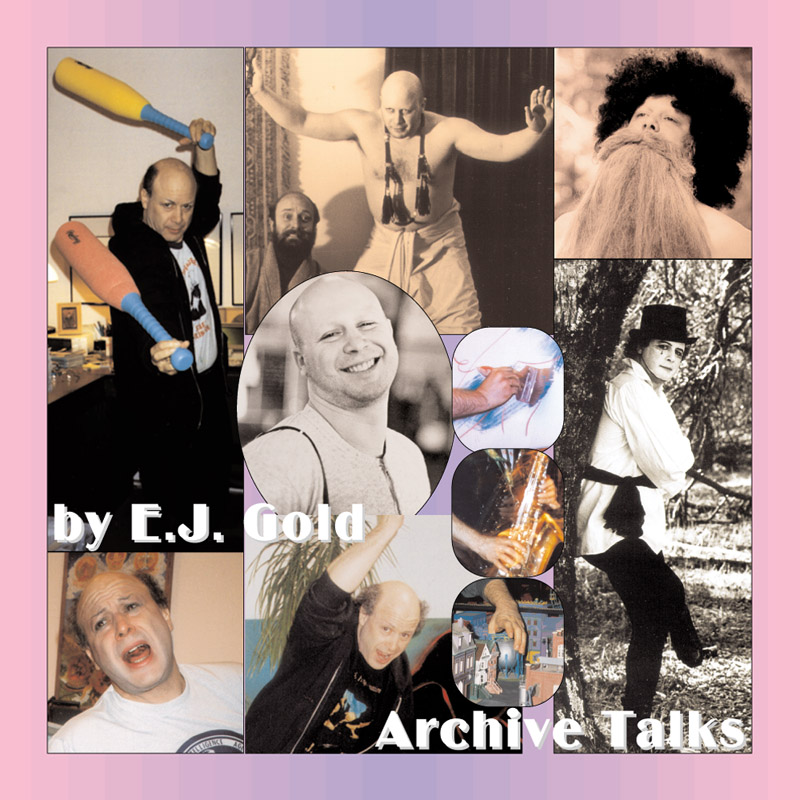

CDT274
The Essence of Creativity
Attention, Art
A.H. Almaas leads us on an inspired journey into the nature of creativity -- what is it? -- why is it so important to us? A lively Q&A session winds up this dynamic talk, including questions from the audience and from Almaas to Gold.
The setting for this talk was one of incredible creative beauty with exquisite fine art paintings on view for a benefit auction that was to follow. These pieces were generously donated by members of the Grass Valley Graphics Group and the Diamond Heart School.
Almaas tells us that generosity is a key component in a truly creative act. He says that creativity seems to be a result of the tension between the polarity of service and generosity.
Another subject touched upon is narcissism and creativity. Almaas states that, "... for a long time creativity is inseparable from narcissism." He looks at narcissism from two entirely different points of view and says, "True creativity works by freeing it from superficial narcissism."
Later in the talk Almaas greatly expands the definition of what is creative. Using an analogy of a sculptor and his hand he says that it's not just the sculpture that is being created. "I'm not only moving my hand, I'm creating my hand ... There is no individual making something; that is just a way of looking at it."
Some final conclusions are: "We like creativity because it connects us to something so fundamental about our existence, our reality .... Reality is being created instant by instant all the time, continuously, without interruption ... the amazing truth and the exquisite sense of beauty to that. We like creativity because it is a reflection of that."
In the second half E.J. Gold looks at creativity from the viewpoint of the practicing artist. He discusses the idea of art being a process, not a product. "It's a process of discovery. Self-discovery? No, it's revelation."
Commenting further on the hand and sculpture analogy, he says, "... the process of amazement is there too. The hand and the sculpture are connected, absolutely connected, and flowing ... within each other, to each other, back and forth from each other. The process of amazement comes from a point of attention. That is what I teach." "Later," he says, "you can use art to practice the attention."
A lively Q&A session winds up this dynamic talk, including questions from the audience and from Almaas to Gold.
Synopsis
The talk, led by Hamid Ali (A.H. Almaas) and E.J. Gold, explores the nature of creativity, narcissism, artistic expression, and the connection between art and spirituality. Ali examines creativity as an outflow of life and its intrinsic link with selflessness, while Gold emphasizes the process of art as a meditative practice rather than a self-expressive act. Both speakers discuss the paradox of self-reflection and the dissolving of ego in true creative surrender, aligning the act of creation with fundamental spiritual principles.
Summary
The event, hosted jointly by the Institute for the Development of the Harmonious Human Being and the Ridwan School, features authors and spiritual teachers Hamid Ali and E.J. Gold. Ali begins by discussing creativity not in terms of artistic knowledge but as a phenomenon of expression and aliveness. He observes that creativity in Western culture is highly idealized and directly linked with narcissism—both in terms of seeking validation and as a deeper marker of the self’s unfolding. True creativity, he states, happens when narcissism and self-consciousness dissolve, allowing an unimpeded flow of expression. He parallels creativity with spiritual realization, suggesting that the core principle of creation is an ex nihilo process, where everything spontaneously emerges from nothingness.
Gold extends this discussion by framing art as an industrial vocation rather than an act of personal self-expression. He posits that creativity mirrors a cosmic process of emergence and emphasizes that true artistic engagement occurs through immersion and attention, unburdened by the ego. Gold describes creativity as a way of participating in the larger unfolding reality, where the artist must continuously surrender their attachment to outcomes. Both speakers highlight the tension between self-involvement and generosity, contrasting conventional creativity—focused on achievements and recognition—with a higher form of creativity that aligns with universal creation.
The conversation transitions into audience inquiries, addressing the role of audience perception, distinctions between states of realization, and the relationship between artistic discipline and spiritual transformation. Ali and Gold agree that true creativity is not bound to specific media but is an innate process accessible through attentiveness, service, and a release of the self-centered narrative. The session concludes with reflections on art as an alchemical act and an upcoming art auction to support creative practice as spiritual work.
Keywords & Key Phrases
- Art as alchemy
- Creative outflow
- Ex nihilo creation
- Spiritual transformation
- Generosity in creativity
- Narcissism and self-expression
- Artistic surrender
- Meditative attention
- The dissolving self
- Process vs. product
- Objective art
- Self-reflection vs. selflessness
- Transcendent perception
- The mystical unfolding
- Improvised reality
- The inner creative fire
- The illusion of authorship
- Cosmic artistry
- Creativity as service
- The great tapestry
- State hunger
- The industrial artist
- Aesthetic perception
- Perception beyond form
- Reality as creative emergence
- Attention as artistic power
Graphic Prompt
"An abstract, ethereal scene of creativity merging with the cosmos: A luminous current of energy flowing from an unseen source, materializing into shifting forms—hands sculpting from light, brushstrokes forming galaxies, musical notes emanating like constellations. The background is both celestial and organic, blending colors, textures, and surreal patterns. The entire composition echoes the ineffable interplay of creation and dissolution, embodying the harmony of artistic transformation and cosmic awakening."



